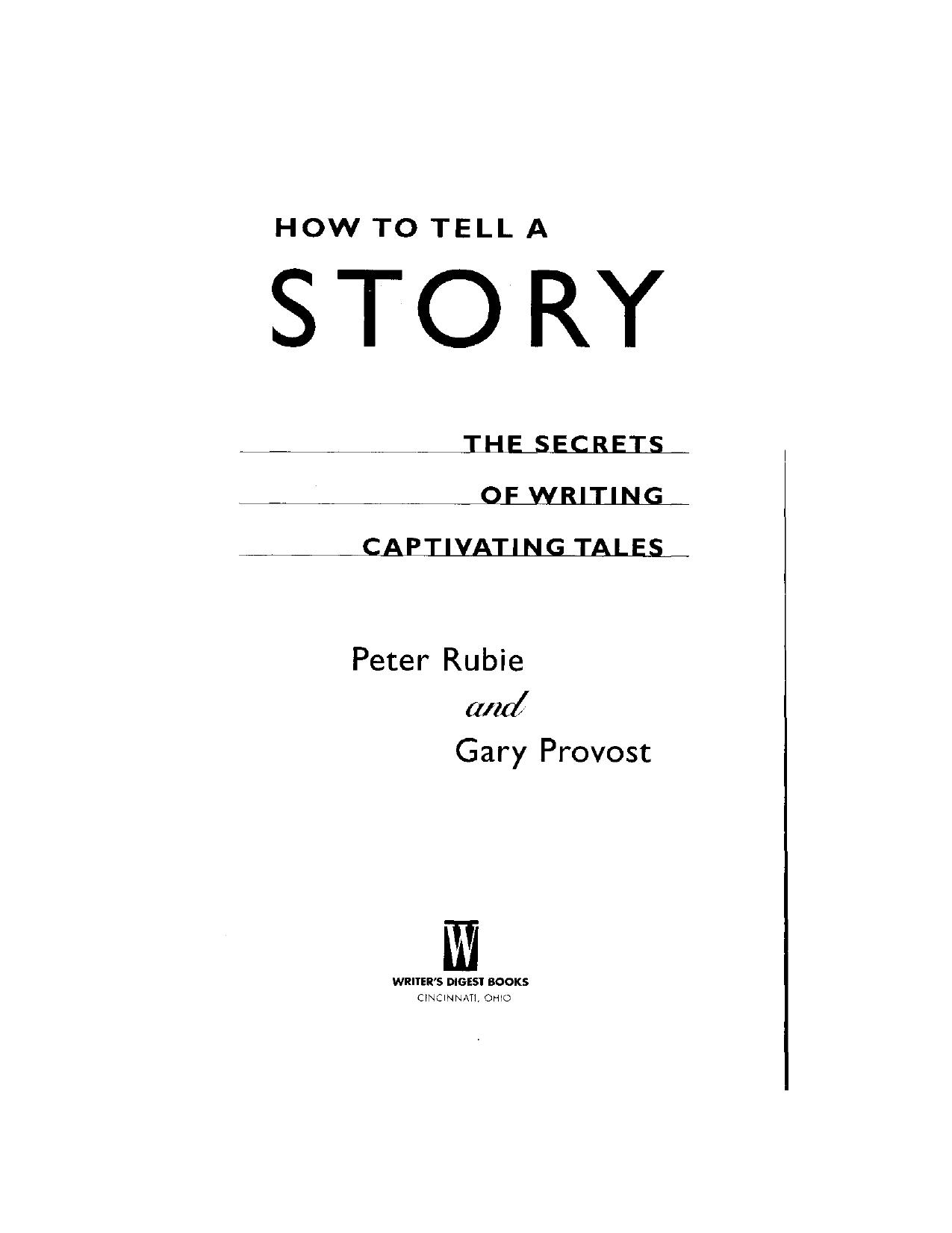How to Tell A Story by Peter Rubie

Author:Peter Rubie [Rubie, Peter]
Language: eng
Format: epub, pdf
Published: 2011-04-15T07:00:00+00:00
All of those are scenes that show Harry's need for money.
With all these options, you need some guiding principle to choose which is the best dramatization to go with. That is often dictated by what you decide the book is going to be about thematically, what is the most emotionally powerful choice, who this character is and how far he will go to achieve his goal, in this case getting $500,000. What is Harry's state of mind?
JUST WHAT IS A SCENE, ANYWAY?
Before starting to write your scene, ask yourself two questions:
• Does this scene advance the story in some way?
• What is this scene about?
Although it's not obvious, these questions are almost synonymous.
Within the scene, the dynamic should always be the same. So when you ask yourself what the scene is about, your answer should almost always take into account your main character. Does the scene move the readers closer to learning something important about that character? Do the dramatized events ultimately move her toward her long-term goal or prize? Your character should encounter opposition and obstacles that create conflict, and often moral or ethical dilemmas the character must resolve in order to move forward.
Having roughly figured that out, you can start to frame the scene.
A scene occurs at a set time and place. If events don't happen at a specific time and in a definite place, you're not writing a scene, you're writing an abstract narrative.
Here are some examples of scenes:
• a week from today in the dentist's office
• the first of March in a casino
• Thursday afternoon in a florist's shop
Each of the above examples contains the basic building blocks of a scene: They all contain a definite and recognizable place and a time.
Let's take Harry's story and develop it.
It is Thursday afternoon in a florist's shop near the hospital. Harry is buying flowers on his way to the hospital to visit his wife, Julie, who is undergoing another series of difficult medical treatments. She is very sick. What we don't yet know is that Harry has lost his job, his medical insurance has run out and he desperately needs $500,000 to pay Julie's medical treatment.
If you cross the "timeline" and go, say from Thursday afternoon to Friday morning, you've left the scene. If you cross the "placeline," it might be the same day but you're no longer in the flower shop; instead you're down at the corner church or at the hospital reception desk. Again, you've changed the scene. Whenever you change the time or the place of a scene, you create another scene.
Leave Nothing to Chance
So you can envision the basic structure of your scene this way: Here's a character, here's his prize, and here's what's trying to stop him from achieving that prize.
If nothing is getting in your character's way, the scene won't work. If your character doesn't want something badly enough, again, the scene won't work because there will be no emotional power driving it. The reader has no real reason to be interested
Download
This site does not store any files on its server. We only index and link to content provided by other sites. Please contact the content providers to delete copyright contents if any and email us, we'll remove relevant links or contents immediately.
| Authorship | Bibliographies & Indexes |
| Book Industry |
Asking the Right Questions: A Guide to Critical Thinking by M. Neil Browne & Stuart M. Keeley(5708)
Autoboyography by Christina Lauren(5204)
Eat That Frog! by Brian Tracy(4483)
Dialogue by Robert McKee(4353)
Sticky Fingers by Joe Hagan(4144)
Journeys Out of the Body by Robert Monroe(3590)
Annapurna by Maurice Herzog(3448)
Full Circle by Michael Palin(3415)
Schaum's Quick Guide to Writing Great Short Stories by Margaret Lucke(3343)
Elements of Style 2017 by Richard De A'Morelli(3324)
The Art of Dramatic Writing: Its Basis in the Creative Interpretation of Human Motives by Egri Lajos(3037)
Atlas Obscura by Joshua Foer(2932)
Why I Write by George Orwell(2913)
The Diviners by Libba Bray(2909)
In Patagonia by Bruce Chatwin(2896)
The Fight by Norman Mailer(2887)
The Mental Game of Writing: How to Overcome Obstacles, Stay Creative and Productive, and Free Your Mind for Success by James Scott Bell(2876)
Venice by Jan Morris(2546)
The Elements of Style by William Strunk and E. B. White(2454)
